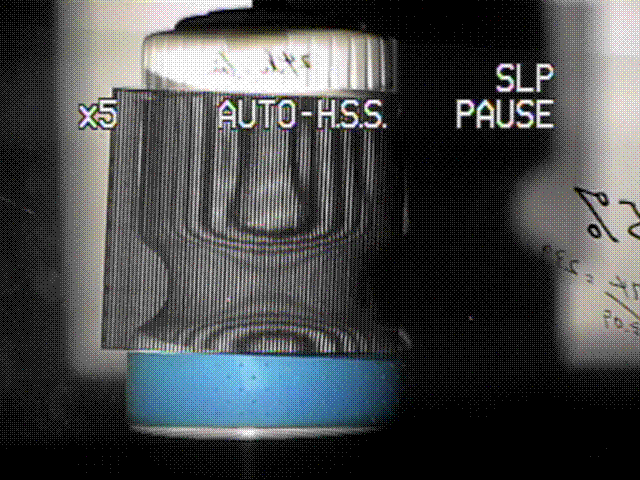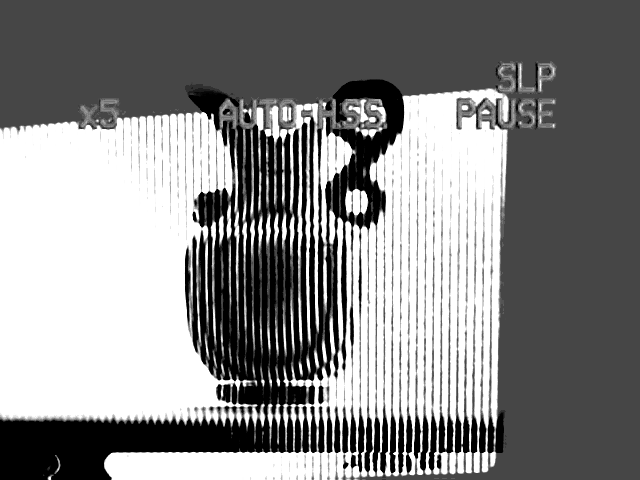LAB FOR SHADOW AND PROJECTION MOIRE --
2/26/97
Figure 1. Shadow moire of bottle
with coarse grid. Pitch = 0.227 cm. Angle between viewing
direction and illumination direction is 20 degrees. Maximum
physical diameter of bottle is 7.25 cm


Figure 2. Shadow moire of bottle with fine
grid. Pitch is 0.111 cm. Off-axis illumination angle is 20
degrees.


Figure 3. Projection moire of bottle with
reference plane pitch of 0.181 cm. Offset angle of illumination
is 20 degrees.


Figure 4. Projection moire of vase with
reference plane pitch of 0.181 cm. Off-axis angle of illumination
is 20 degrees. The maximum physical diameter of the vase body is
4.46 cm.


- Assuming the cross-section of the bottle is circular,
what is the diameter of the upper part of the bottle as
measured from the moire in Figure 1. What is the diameter
of the necked region? Does this agree with the directly
measured diameters? How do you take care of scaling?
- Make the same measurements using Figure 2. What is the
difference between the two images?
- Make the same measurements using Figure 3. Do you get the
same answers for the two methods?
- How accurate do you think your measurements are for
Figure 1 and Figure 2 ?
- How deep is the neck built into the lower part of the
bottle ? Does this agree with your direct measurement
after scaling is taken into account?
- Plot a horizontal line profile of depth variation across
the middle or widest part of the vase in Figure 4.. How
accurate are your results? How would you improve your
accuracy? What is the limit on the accuracy you can hope
to obtain?
- Draw sketches and explain why the scaling factor for
shadow moire is tan a, while
for projection moire it is sin a.
- Would increasing or decreasing the angle between viewing
direction and light direction change the sensitivity of
the reading? If so, which way for which method? No effect
on either method?

Last Modified on April 20, 1997


![]()

![]()

![]()

![]()
![]()